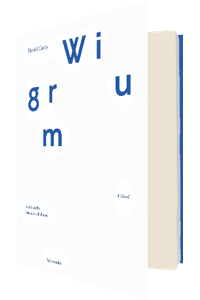Among his many contributions to the study of natural history and philosophy in the mid-1600s, Danish physician Ole Worm is credited with undressing the unicorn. Proclaiming that the tall, pointy horn assigned to its head in fact belonged to the narwhal, Worm was able to further impart the knowledge that—contra everyone from the Greeks to citers of the “Indian rhinoceros” to God in his address to Job—the beast probably wasn’t real. In the early 1900s, the question of the unicorn was recruited for an entirely different debate when Austrian philosopher Alexius Meinong argued over the inequity of an ontological status that is ascribed to things that exist—horses, for example—and denied to those that don’t. Yes, the unicorn is chiefly an object of thought, but it is as an object of thought that we bring it into being.
Had Meinong and Worm ever met, they might have discovered that they shared other interests. Worm was a voracious collector of relics and artifacts and came to be known for his Wunderkammer, or “wonder-room,” a cabinet of curiosities filled with natural and man-made objects. He was also interested in how placing a thing outside of its natural environment might impact its meaning. Meinong’s interest, meanwhile, was in nonexistent objects. Think about something that doesn’t exist, perhaps a golden mountain, and the very act of your thinking about it gives it a kind of being. He proposed that we affirm the nonbeing of things, some of which might merely be homeless, hovering somewhere between being and nonbeing, perhaps waiting patiently to a grating musical loop for the next available representative. Meinong gave real things that don’t exist their due in his 1904 essay “Theory of Objects,” in which he extended the idea that certain objects might belong to a higher order. Unicorns were less interesting here than was the sense of forward momentum in the vast debate over what is logical. You don’t need to be Wittgenstein to question the validity and usefulness of logic, or to see that often it is not the thing in itself to which you are drawn but what the thing represents: power, comfort, danger. (This can be as real as peach pie, as far as you’re concerned.)
To Sebastian Wigrum, the central character of Daniel Canty’s novel, objects represent the unknowable—the “patron saints of a godless world,” he calls them—and as a collector he has made his life’s work the...
You have reached your article limit
Sign up for a digital subscription and continue reading all new issues, plus our entire archives, for just $1.50/month.
Already a subscriber? Sign in





